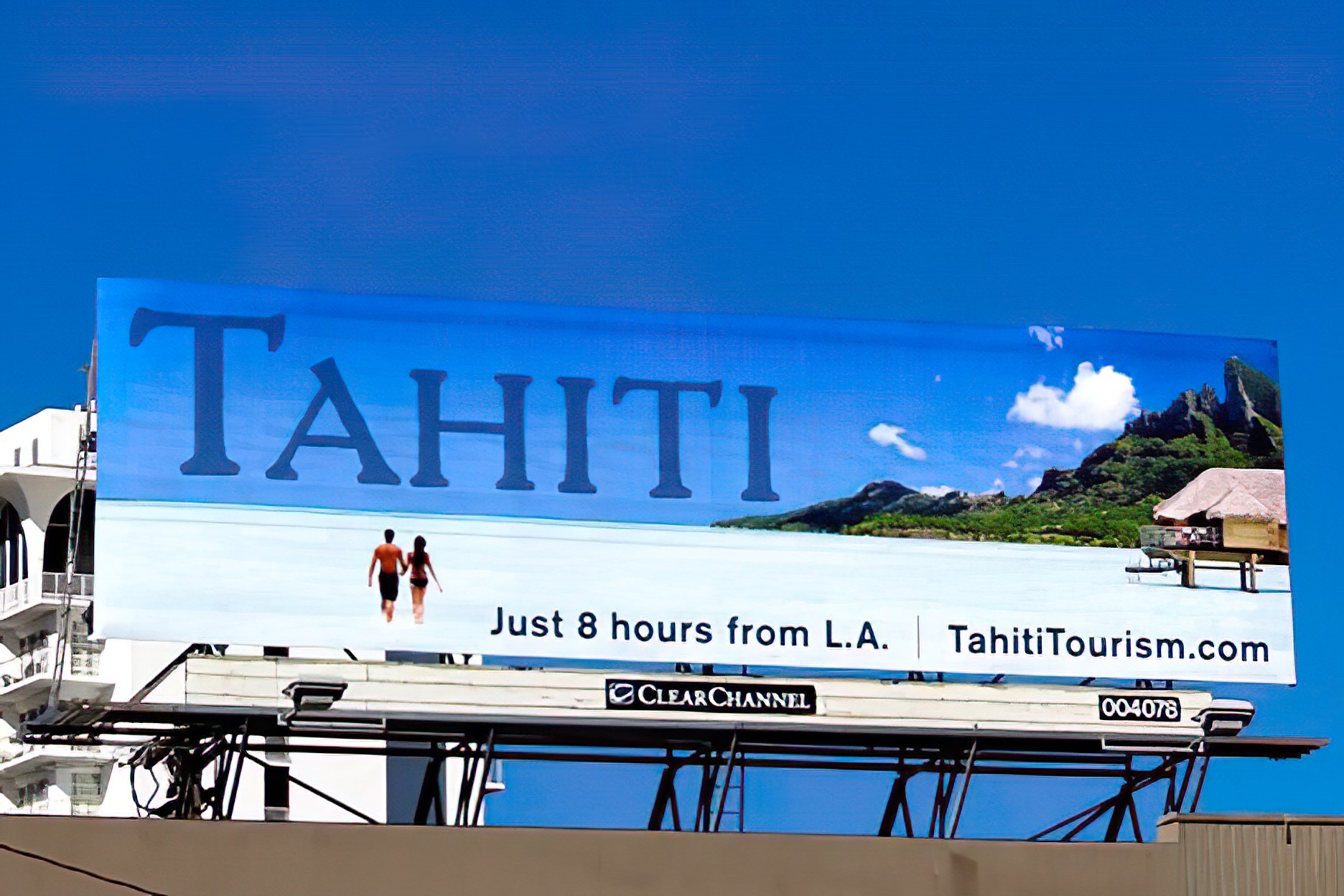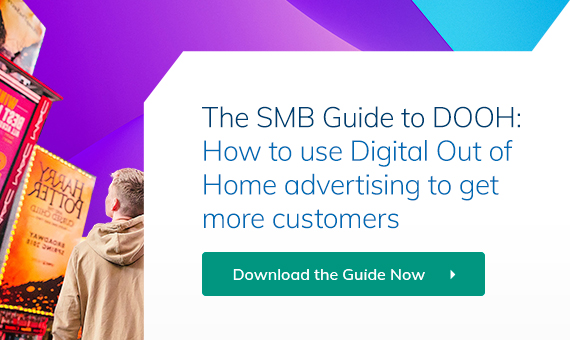Digital out of home advertising, or DOOH, is a powerful tool for promoting tourism destinations.
With DOOH, marketers can display visually stunning ads on digital screens in public places, such as airports, train stations, and shopping malls, to capture the attention of travelers and inspire them to visit new places.
Digital Out of Home (DOOH) advertising is a form of marketing that utilizes digital screens in public places to display ads to a large audience. DOOH ads can be designed to incorporate both contextual and dynamic messages. These ads take into account the surrounding environment and demographics of the viewers to deliver a more relevant and personalized message.
With the rise of technology, DOOH has become increasingly popular as it allows advertisers to create engaging and interactive campaigns that can be customized based on the location, time of day and even weather conditions.
This is vital, because ad fatigue is real.
As the amount of time we spend online – on laptops, tablets, phones and even watches – increases year-on-year, the number of ads we see per day, is growing at a rapid rate.
With DOOH, the ads are difficult to avoid and stand out to passers-by due to their size and stark contrast to the real-world environment. For this reason, DOOH often has more impact on consumers than online advertising.
However, creating effective DOOH ads for tourism marketing requires careful planning and execution.
Tourism In Numbers
According to Statista figures from January 2023, revenue in the Travel & Tourism market is projected to reach US$854.80bn in 2023. It is expected to show an annual growth rate (CAGR 2023-2027) of 4.41%, resulting in a projected market volume of US$1,016.00bn by 2027.
The market’s largest segment is hotels, with a projected market volume of US$408.80bn in 2023.
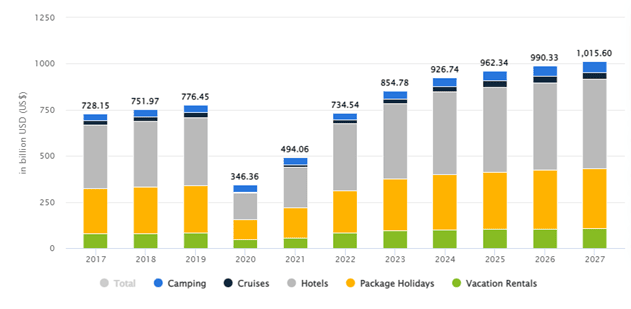
(Image source: statista.com)
In this blog, we’ll explore four key strategies for creating compelling DOOH ads that can help drive tourism.
- Use eye-catching visuals
When creating DOOH ads, visuals are king. Travelers are often in a rush, so your ads need to capture their attention quickly and make an immediate impact.
Use high-quality, visually stunning images or videos that showcase the beauty of your destination. Make sure your visuals are relevant to your target audience and highlight the unique experiences and attractions that your destination has to offer.
Let’s say a new beach resort destination wants to promote itself to potential customers. They might create a DOOH ad featuring a panoramic view of the beach and the resort, with clear blue skies, crystal-clear waters and palm trees swaying in the breeze. The ad could use high-resolution imagery and bright, vibrant colors to capture the attention of passersby, as well as animations to create a sense of movement and dynamism.

(Image source: twitter.com)
To make the ad even more engaging, the travel brand could include a call-to-action, or incentives such as a discount code or special offer, to encourage potential customers to take action.
The ad could be placed in high-traffic areas like airports or train stations, where travelers are likely to be thinking about their next vacation. By using eye-catching visuals and a clear call-to-action, the travel brand can effectively promote its new destination to potential customers and drive bookings.
2. Keep your messaging clear and concise
When it comes to DOOH ads, less is often more.
Keep your messaging short and to the point, with a clear call to action. Use concise, easy-to-understand language and make sure your message is easily readable from a distance. Avoid cluttering your ad with too much information or distracting graphics that could confuse or overwhelm your audience.
A message such as “Fly nonstop to [destination] from [departure city] – now taking bookings!” is one such example. The ad should also use easy-to-read fonts and high-contrast colors to ensure that the message is visible and legible from a distance.
A DOOH ad with a clear and compelling message can be an effective tool for driving bookings and increasing brand awareness.
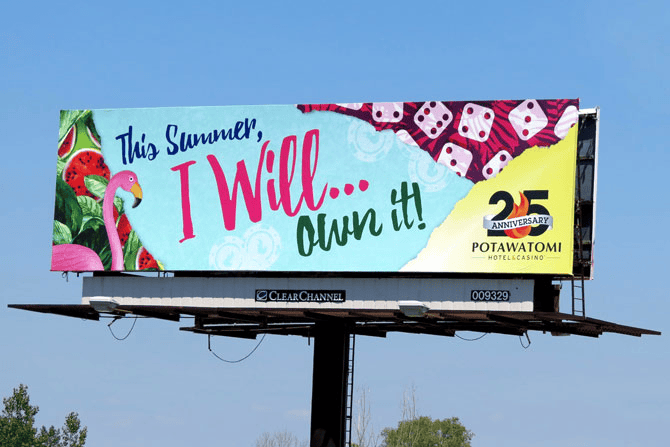
(Image source: blog.clearchanneloutdoor.com)
3. Know your target audience and ad placement
To create effective DOOH ads, you need to understand your target audience. What are their interests, motivations and travel preferences? Use this information to tailor your ad messaging and visuals to their specific needs and desires. For example, if you’re targeting adventure travelers, highlight the exciting outdoor activities available in your region.
Let’s say a cruise line wants to promote a new itinerary to potential customers. They might create a DOOH ad that features visuals of the destination and the ship, along with messaging that highlights the key selling points of the itinerary, such as the activities, dining options, and amenities.
However, if the ad is located where the target audience is unlikely to see it, such as a college campus or a low-income neighborhood, it may not be effective in generating interest and bookings.
In contrast, if the same ad is placed in a high-traffic area near a travel agency or in an upscale shopping center where potential customers are likely to be, it is more likely to reach the target audience and drive bookings.
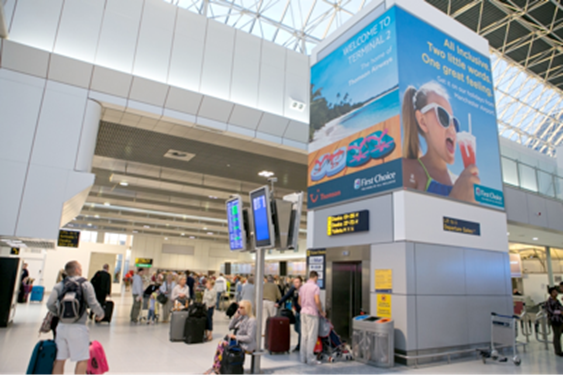
(Image source: centreforaviation.com)
By understanding your target audience and where they are likely to spend their time, the cruise line can create a DOOH ad that is more effective in reaching and engaging potential customers. This demonstrates the importance of understanding the target audience when developing and placing DOOH ads to ensure they are seen by the right people in the right place, maximizing the chances of driving bookings and increasing brand awareness for the travel industry.
4. Incorporate interactive elements
Interactive DOOH ads can be a great way to engage travelers and encourage them to learn more about your destination. Consider incorporating interactive elements, such as touch screens or augmented reality features, into your ads. This can help create a more immersive experience and leave a lasting impression on your audience.
In conclusion, DOOH now provides an incredible digital canvas, in almost any location, that travel brands can utilize to bring extraordinary experiences to life in very ordinary situations. DOOH leaves a lasting impression on consumers and, most importantly, encourages them to act.
Today, brands can create compelling DOOH ads that inspire travelers to explore new destinations and create unforgettable memories.
Get Started with Programmatic DOOH Today
With The Neuron, your campaigns can be created and run via single-click processes on a dashboard that’s easy to use and navigate. You can then use the platform to track your campaign and view in-depth analytics so you can adjust and optimize in real-time.
It couldn’t be easier to get started with programmatic DOOH. Start now!
